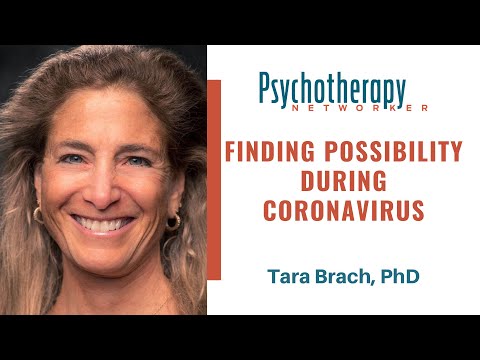There’s an old parable in the Buddhist tradition that begins with Buddha and one of his disciples walking through the woods on a warm afternoon. Tired and thirsty, they stop to rest, and Buddha asks the disciple to get him a cup of water from a nearby stream. Just as he arrives at the stream, an ox cart passes through it, clouding the water with mud and gravel. The disciple returns to Buddha and says, “My Lord. The water is cloudy and unfit to drink.”
Buddha tells the disciple to wait a moment and then return to the water. When he does, he finds it still cloudy. “Wait a little longer, and then go back,” Buddha instructs.
This time, the mud and gravel has settled, and the water is clear. “You see,” Buddha says when the disciple returns with clean water, “Sometimes the water of the mind is clouded with bad thoughts. But when we remain patient and wait for them to pass, the mind becomes clear, just like this water.”
The message is straightforward and commonly taught to meditators today: when negative or distracting thoughts arise, simply notice them and let them go.
But Cheetah House, a nonprofit organization founded at Brown University in 2009, says it’s not that simple, and questions what happens when those thoughts are so negative, so intense, that they not only become unbearable, but risk irreparable harm to the meditator.
This assertion—that perhaps meditation isn’t as safe as most people assume—is at the center of a debate within the clinical and mindfulness communities, including those that say they’ve experienced negative effects firsthand.
Cheetah House, which takes its name from citta, the Pali and Sanskrit word for mind, was originally a study house for students returning from overseas meditation retreats and looking to continue a monastic lifestyle. But after a growing number of them reported negative effects of meditation, the organization—comprising 10 staff members, including therapists and meditators—has grown to treat, study, and raise awareness of meditation-related challenges through hundreds of trainings and speaking events worldwide.
Just how bad are these negative effects? Cheetah House has compiled a lengthy list of them—59 in total—including pain, fatigue, irritability, crying, laughing, fear, panic, paranoia, rage, depression, nightmares, hallucinations, weight loss, weight gain, irregular heartbeat, hypersexuality, hyposexuality, suicidality, social impairment, occupational impairment, anhedonia, and loss of sense of self.
There are a range of suggestions as to why meditation could be causing these effects. Several studies say it increases the body’s production of serotonin and cortisol, which regulate anxiety, as well as dopamine, which regulates focus; but too much of these hormones can result in hyperarousal or hypersensitivity. Conversely, some studies have linked meditation to decreased blood flow, spurring hypoarousal in the form of dissociation or disembodiment. Others suggest that clearing the mind shuts down the psychological coping mechanisms some use to keep troublesome thoughts and memories at bay.
The testimonials on Cheetah House’s website are sobering: “My whole being felt like it split apart,” says one former meditator. “I finally managed to get rid of the noise, but the silence is that of a tombstone,” reads another. One person describes their relationship with meditation as a “five-year love affair with the breath.” Then, it continues, “my breath betrayed me.”
These responses aren’t uncommon, the organization says. A study it conducted found nearly a quarter of regular meditators experience negative effects, and that even among people who’d only meditated once, nearly 10 percent experienced impaired functioning as a result. In addition, a 10-year NIH-funded study it helped organize found nearly 60 percent of those who’d experienced negative effects—the most common being anxiety, depression, and cognitive impairment—were meditation teachers. Some even required inpatient hospitalization.
The problem, says Willoughby Britton, Cheetah House’s founder, is that much of this runs counter to popular thinking about meditation. “There’s a misconception that meditation is safe, anyone can do it, and you can’t really do too much harm by it,” she says. “That’s not true.”
Britton isn’t new to meditation or mental health. She’s a practicing therapist, an instructor in Mindfulness-Based Stress Reduction and Mindfulness-Based Cognitive Therapy, and a psychiatry professor at Brown Medical School. Before founding Cheetah House, she spent 20 years at Brown studying the neuropsychological effects of mindfulness.
Britton didn’t set out looking for problems with meditation. In fact, she began as a practitioner. During her doctoral studies, she orchestrated a study examining the effects of meditation on sleep, believing meditators would sleep better. But when the data reported the opposite—that they were experiencing insomnia—she believed the experiment had been a failure, and sat on the results until 2010, when stories began to trickle out that corroborated her findings.
She says the vast majority of studies don’t talk about adverse effects because they aren’t looking for them, and researchers don’t do further exploration when they turn up. And that bias can be dangerous for mental health, she says. “What kinds of assumptions are psychologists making about these practices that aren’t really intended to help people improve their mental health?” she asks. “People believe that whatever you’re going through, meditation is the solution. And that even if you experience problems doing it, keep going.”
Despite prevailing notions that meditation is, generally, very safe, Britton says there’s a hunger for Cheetah House’s services. Last year, the organization served almost 20,000 people. This year alone, she says, it has provided training and counseling to almost 6,000 people per month. Its website lists Harvard Medical School, Brown University’s Mindfulness Center, Tufts University, the UK’s National Health Service, and more than a dozen other organizations—including some acclaimed mindfulness centers—as partners.
“So many of the meditators who come to us say they feel betrayed by the meditation teachers and clinicians they’ve worked with,” she says. “I can’t tell you how many people told me they were laughed at when they asked if there were any adverse effects to meditation.”
Meditators at Odds
Many mental health authorities recognize some risks. A page on NIH’s National Center for Complementary and Integrative Health’s website acknowledges “rare reports that meditation could cause or worsen symptoms in people with certain psychiatric problems like anxiety and depression.” A page for the VA’s Whole Health program reads, “If you have a serious psychiatric disorder, like schizophrenia or PTSD, you should talk with your health care team before practicing meditation.” And in the DSM-IV and V, the APA lists depersonalization as a potential side effect of meditation. But that hasn’t stopped Cheetah House from attracting the ire of some in the meditation community.
“Sadly, there should be a trigger warning for the Cheetah House website,” says renowned Buddhist teacher and clinical psychologist Jack Kornfield. “Too much of it is misleading information and over-the-top fearmongering.”
Trudy Goodman, a meditation teacher, retired therapist, and Kornfield’s wife, agrees. “It seems Cheetah House has a pretty big chip on its shoulder,” she says. “Mindfulness is actually very safe. This is like trying to debunk exercise because your heart will beat faster or you’ll feel out of breath. Why are we focusing on harms and scaring people away from something that builds inner strength and resilience?”
The founder of several meditation centers who’s worked closely with several Zen masters, Goodman says she’s witnessed only two instances of meditators experiencing serious adverse effects in her more than 30-year career. And while she admits she’s seen more instances of meditators experiencing mild discomfort when certain emotions arise, that’s usually the product of these emotions having been long unexplored—not the fault of the meditation itself.
“When you lead people into silence, sometimes problems that were buried get unearthed,” she explains. “People’s demons can come out and play, because before, the silence was cluttered by the default network of thinking, thinking, thinking. What’s happening in your mind isn’t always a pretty sight.”
Fortunately, she says, the last several decades have seen meditation become increasingly trauma informed, and good meditation teachers won’t recommend intensive meditation to trauma survivors. As a general rule, Goodman recommends that people meditate with their eyes open and focus externally rather than internally—which gives the meditator more control. She says that good teachers know how to spot agitation and will recommend grounding exercises, like walking or talking, if they see it.
Of course, she adds, not all self-proclaimed teachers are trained, know what populations need extra care, or understand how to spot or handle problems when they arise. That includes clinicians, she says, some of whom may not have meditated much themselves.
“Meditation is hard work, and it’s only as good as the teacher,” she says. “There’s no question that some people’s difficulties might come to light while meditating, but they were there before; the meditation didn’t cause them. So let’s not throw out the baby with the bathwater. It’s eliminating something that for many people is life changing.”
Common Ground
While some consider Cheetah House to be a bit of an instigator, Britton has allies in the meditation and clinical communities.
“I’m very impressed with Britton’s work,” says Richard Sears, a clinical psychologist and Zen master, who’s been practicing meditation for almost 40 years. “She definitely knows what she’s doing, and her research is important. It’s not saying mindfulness is horrible or wonderful—just that something is happening, and we should be aware of it. This is opening up a conversation.”
Sears agrees with Goodman that meditation may be shining a light on problems people have never really faced—that the pain Britton attributes to meditation may have been there all along. But he adds that meditation can be inherently jarring, especially on days- or weeks-long meditation retreats, where meditation teachers may not be especially hands-on. In these scenarios, he says, “the mind will do all sorts of things to try to entertain itself.”
Sears knows this from personal experience. He says that sometimes during prolonged silence and stillness, your senses acclimate, and your physical awareness of your body begins to disappear—what some meditators call an experience of oneness. “This oneness with the universe sounds beautiful and poetic,” he says, “but we have such a strong attachment to our identities that if you don’t understand the physiology of what’s going on, it can be scary. I’ve had several students come to me after a long retreat and talk about this experience of losing a sense of self. Having someone who can help you process that is so important. I’ve experienced things that have needed processing, too. Luckily, I’ve had some really good mentors, who’ve normalized those experiences and helped me notice my reactions to them.”
He points out that clients can get triggered in psychotherapy, just as they can in meditation, and emphasizes that therapists using meditation should know how to offer clients support if that happens. He uses the analogy of a movie theater: “One of the reasons we go to the movies is to get lost in the movie,” he says. “It might really grip you, or scare you, or make you laugh or cry, but when you’re able to step back, you realize it’s just a movie. Meditation is one of those experiences you can get really caught up in. So therapists may need to help people step back from it if they need to.”
Middle Ground
According to a 2018 report from the Centers for Disease Control and Prevention, approximately 14 percent of American adults—that’s 35 million people—say they meditated at least once in the last year. And according to IBISWorld, which compiles industry research, the American meditation sector is worth more than a billion dollars and counting.
Britton wonders whether, as meditation becomes increasingly popular and lucrative, the clinical and mindfulness communities as a whole have turned a blind eye to the possibility of adverse effects. “I think some built-in aspects of meditation instruction have obscured the possibility of acknowledging adverse effects,” she says, “like when teachers say to accept inner pain or change your relationship with it. But the idea that the only problem is the resistance that you, the meditator, have to the problem is wrong. It’s victim blaming.”
Britton says she sympathizes with not wanting to scare people away from meditation by announcing warnings beforehand, but also wonders about the ethics of not doing so. After all, she says, as far as psychotherapy goes, part of informed consent is disclosing both benefits and risks. And since in many circles, meditation is being elevated to the status of other treatments for mental health disorders—including antidepressants—she thinks it should be treated similarly.
“Many people, including myself, got into meditation for its benefits,” she says. “But that doesn’t mean it’s going to work the same for everyone.”
As for those who still disagree with her? Britton’s response is therapeutically measured. “I’d encourage them to look deeply at their attachments and investments into meditation being one-hundred percent positive all the time,” she says. “That’s an unrealistic expectation of anything. So let’s take a deep breath and think about what we’re doing here. We all want to help people suffer less. We’re all on the same team.”
Let us know what you think at letters@psychnetworker.org.
Chris Lyford
Chris Lyford is the Senior Editor at Psychotherapy Networker. Previously, he was assistant director and editor of the The Atlantic Post, where he wrote and edited news pieces on the Middle East and Africa. He also formerly worked at The Washington Post, where he wrote local feature pieces for the Metro, Sports, and Style sections. Contact: clyford@psychnetworker.org.













